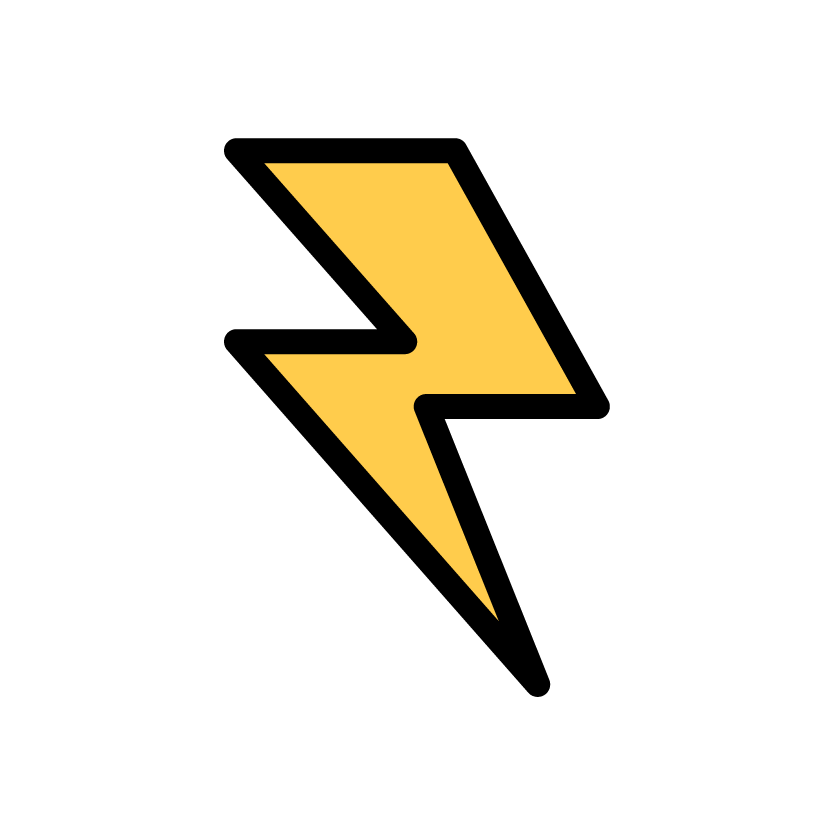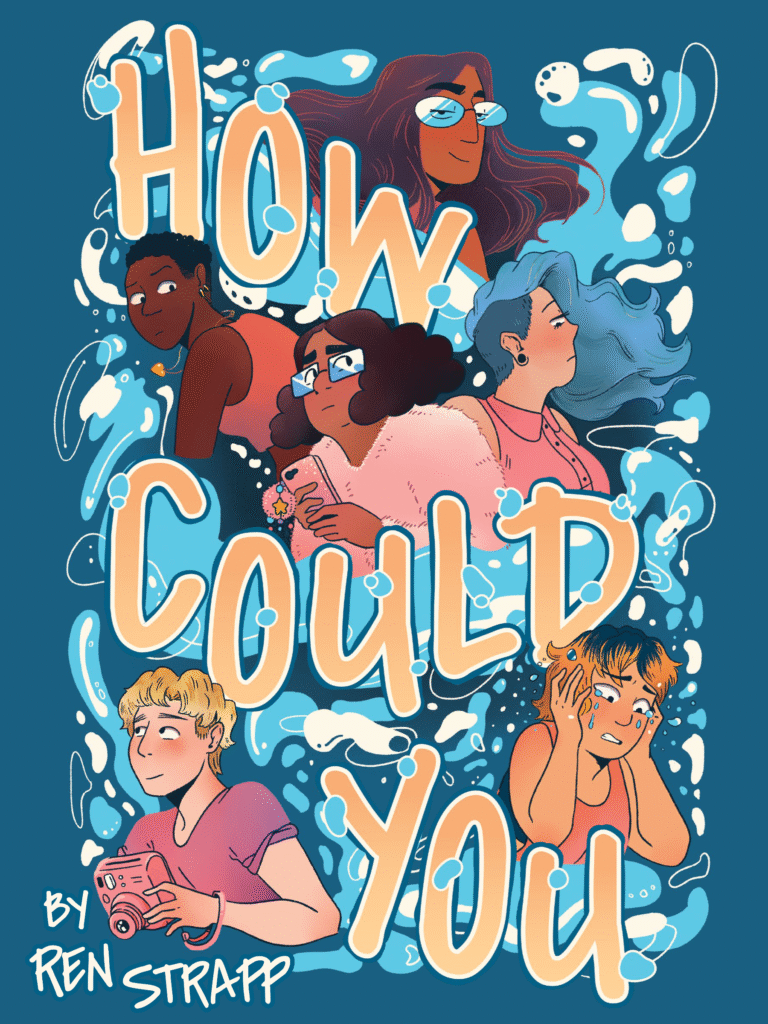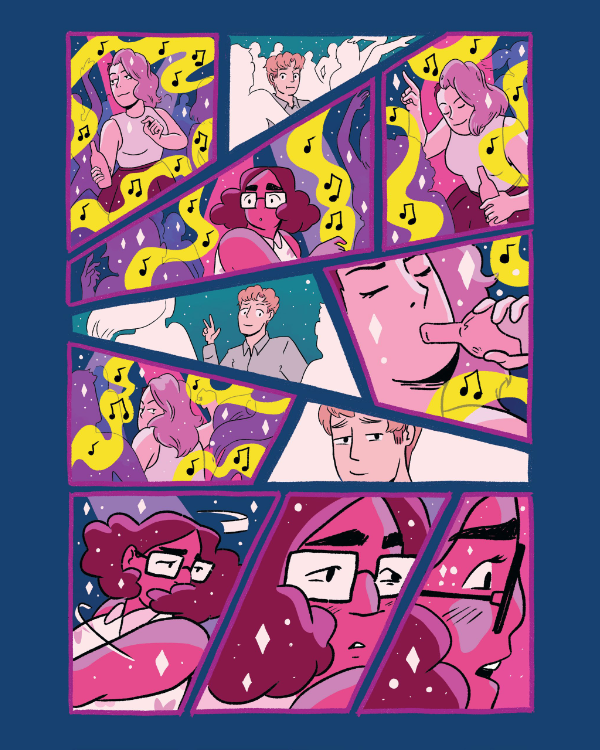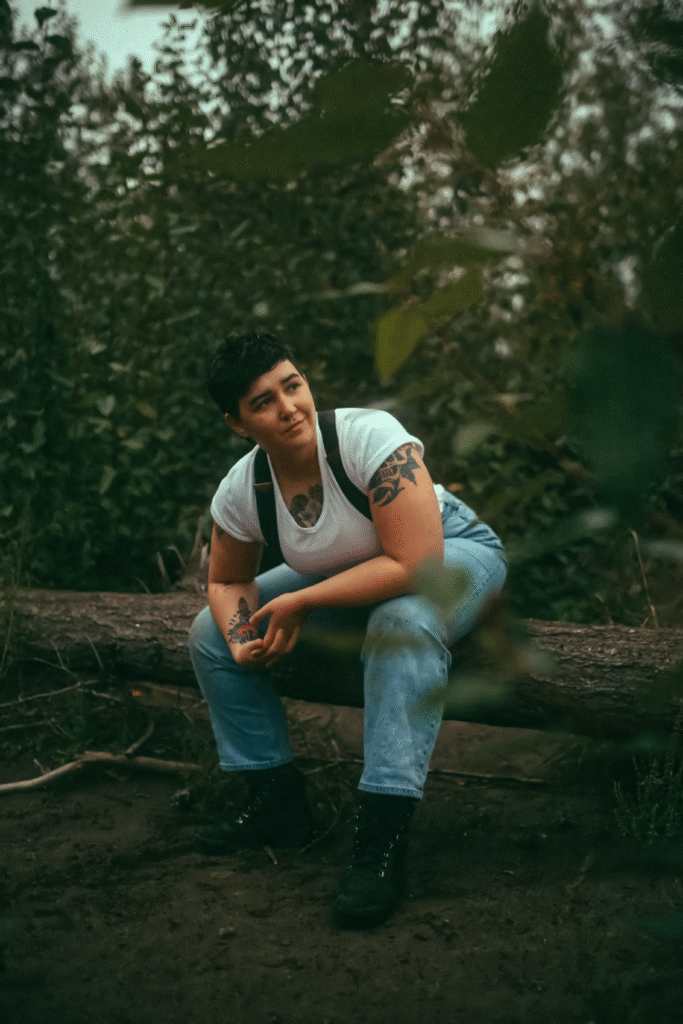by Priya Saxena

Ren Strapp’s How Could You is a graphic novel about a group of queer college students and all the ways their love lives intersect. Molly tries to move on from her ex-girlfriend but stands to get her heart broken again when the new object of her affections becomes infatuated with someone else. Meanwhile, Yona develops feelings for Molly’s ex while studying abroad with her in France but struggles to figure out if those feelings are reciprocated. These romantic entanglements cause joy and excitement but also insecurity and heartbreak, and the group must find ways to deal with the fallout from rash decisions born of selfishness and jealousy.
Ren Strapp discusses How Could You with BoC in this interview. How Could You is out now and available for purchase from Oni Press.
Editor’s note: If you enjoy this interview, be sure to join Queer Spec and BoC on Patreon where Ren Strapp recommends 5 titles for BoC’s Required Reading where we ask comic creators to recommend titles for comics, books, TV, and film that either go with or inspired their comic–without explanation! Join us at any tier–including free!!–to unlock access to this great perk!

It’s unusual (and refreshing) to find a book that is so wholly about the lives and experiences of lesbians and queer women. Complicated friendship and relationship dynamics between queer people are at the heart of this book. These types of dynamics are not only important to represent, but they also make for riveting drama. The stakes are so much higher when you have to deal with your new crush dating your old crush, or when you have to figure out whether the girl who likes kissing you for photos actually returns your romantic affections or just sees you as a gal pal. What excited you about exploring these twisty queer dynamics? Did you make a conscious choice not to include any significant male characters, or was that just a byproduct of you focusing on what interested you for this story?
At the inception of How Could You, I knew I wanted to focus on queer fuckups because no one on earth is an angel, doubly so when it’s your first time figuring out how to be an adult. Something I rage against is the societal pressure (both external and internal to the queer community) to be the most morally perfect, the best at communication, the most righteous. Lots of people way smarter than me have written about how marginalized people have the burden of performing sainthood in order to be worthy of existence, and I hate that stuff.
More specifically, I wanted to address how easy it is to lose people, especially in a space as constructed and temporary as college or university. We lose people every day over things left unsaid or choices we make, all without really having the opportunity to make amends. Then it’s graduation, and then we live the rest of our lives.
As for not including any significant male characters, enough has been written about men. I’ll include men only if the narrative needs it.
One thing that struck me while reading was the extent to which Molly messes up and makes decisions that come back to bite her. I have a soft spot for queer female characters who behave imperfectly, and I feel that queer characters should be allowed to be as messy as their straight counterparts. I imagine it might have been tricky to strike a balance between showing us Molly’s more ill-advised antics and making sure the readers could understand why she acted the way she did. How did you find that balance?
I’ll admit: I’m self-conscious that I didn’t find that balance. Ultimately, I think, the balance of whether a mistake-making character is relatable or sympathetic is in the eye of the beholder. Some people will read How Could You and think to themselves, “Ugh, disgusting, I would never act that way,” and I would say to them, “Ok. Have a nice day.” Other people have said, “Oh my god, thank god I’m not alone, this is me, this is my friend, I thought I was uniquely fucked,” and this book is for those people.
I wanted to write a story that rolled around in the realistic, possibly even mundane, heartbreak of being 20 years old. If one is willing to open their hearts to characters (and real life people) who make hasty, selfish decisions, then the way Molly and the rest behave will resonate.

Your use of vibrant colors stands out to me. This book deals with heightened emotions of romance, loneliness, and heartbreak, and the vivid colors help depict the true intensity of the emotions these characters are feeling. What was the coloring process for this book like? How did you determine the ways in which the colors would add to the storytelling?
The whole book is done in a risograph color palette. I took fifteen or so hex codes derived from risograph inks and layered them on top of each other at different opacities to achieve the color mixing. (This is how I continue to do my coloring to this day, though I use different inks lately.) Comic coloring professionals, please do not look at me. This is not a normal thing to do. LOL
I had a sign above my desk for all the years I spent working on How Could You that said, “Color for mood, not realism,” which became my guiding light for this book and my work to follow.
In addition to colors being guided by mood, I also gave each character a specific color that they wear. Yona is a sweet pink for her romantic nature, Molly is blue for being a cry baby, Lou is a steadfast green, etc. I wanted my characters to be easily recognizable based on shape and hue, and as a result, when characters interact and have an impact on each other, some of their color rubs off. For example, when Molly spends time with Anjali, her blue clothes turn more purple.

You have a large cast of lesbian and bisexual characters in this story, and they all have very distinct fashion senses and styles of gender presentation. It mirrors the diversity of style I’ve experienced in lesbian and queer communities, and it feels very true to life. Additionally, it communicates a lot about each character in a succinct and effective way. How did you come up with each character’s sense of style? Were there any specific types of fashion you were especially excited to represent?
I was inspired by 2013 fashion (aka: the era I was in college for). You can see this in Olene’s galaxy print leggings or Yona’s holographic skirt. My more masc characters (Lou, Molly) aren’t very adventurous when it comes to fashion, but even so, Lou’s exploration of gender nonconformity coming in the form of wearing a tie and suspenders to a house party is extremely early 2010s.
I was delighted by the section breaks scattered throughout the book. They each depict little drawings of items that are significant to either the previous scene or a scene coming up. Examples include an overturned bong, Molly’s ex-girlfriend’s scarf, and a French pastry. How did you decide which items to include on these pages? What was your favorite?
When I reflect back on college years, some of the things that stand out most in my mind are the little details like the shitty coffee mugs from the cafeteria, the too-expensive chip canisters from the campus store, the miscellaneous garbage in a dorm room. To that end, I really liked the snack trash at the beginning, and the hair clippers at the end. They’re the most nostalgic.
If readers want to learn more about you and your comic work, where can they find you online?
My website renstrapp.com has more comics, my blog, and fun links! I also have a newsletter https://renstrapp.beehiiv.com/ that I highly recommend because I will send you the good kinds of emails.
Other than that, I’m on Instagram, Bluesky, and Tumblr (renstrapp everywhere!)

Ren Strapp is a comic artist, designer, and gender nonconforming lesbian werewolf. She grew up in Susquehannock territory and now lives on unceded land at the confluence of the Wimahl and Willamette rivers. Ren started her comics career in zines and web comics and will be a zinester until she dies. Her work is inspired by risograph printing and American traditional tattooing. You can catch her in the forest, where she will be camping, lifting weights, and hiking.
Priya Saxena (she/her or they/them) is a writer and critic based in New York City who enjoys reading queer comics and watching campy television. You can follow them on Twitter at @lettersofpriya.

Comments are closed, but trackbacks and pingbacks are open.